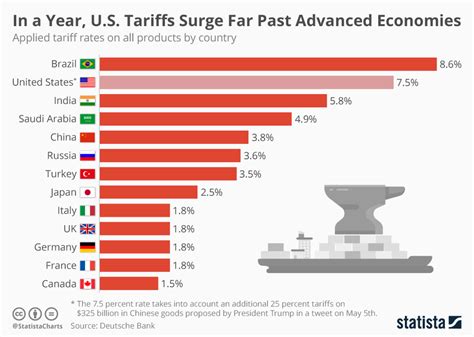
Billionaires are reportedly shifting investment strategies, selling off Nvidia (NVDA) stock in favor of the iShares Bitcoin Trust (IBIT), a BlackRock exchange-traded fund (ETF) tipped for a potential 12% surge, as revealed by regulatory filings and investment analysis.
A recent report analyzing regulatory filings indicates a strategic move by several high-profile billionaire investors away from Nvidia, a dominant player in the artificial intelligence (AI) chip market, and towards BlackRock’s IBIT, a Bitcoin-linked ETF. This shift suggests a growing confidence in the cryptocurrency market and potentially a re-evaluation of risk-reward profiles within the tech sector. While the exact reasons for this reallocation remain multifaceted, factors such as profit-taking from Nvidia’s significant gains, diversification strategies, and bullish sentiment towards Bitcoin are likely contributing factors.
According to financial analysts, the move into IBIT reflects a broader trend of institutional investors seeking exposure to Bitcoin through regulated and accessible investment vehicles. The iShares Bitcoin Trust offers a way to invest in Bitcoin without directly holding the cryptocurrency, which can involve complexities related to storage and security. The predicted 12% surge highlights the optimism surrounding Bitcoin’s future performance, driven by factors such as increasing adoption, potential regulatory clarity, and macroeconomic conditions.
The report emphasizes that while Nvidia remains a strong company with significant growth potential, the concentration of wealth in a single stock can increase portfolio risk. Billionaires, with their sophisticated investment strategies, often diversify their holdings to mitigate potential losses and capitalize on opportunities across different asset classes.
Details of the Investment Shift
While specific names of the billionaires involved were not directly disclosed in the Yahoo Finance article, the report alludes to regulatory filings providing evidence of this shift. These filings, required by the Securities and Exchange Commission (SEC), mandate that institutional investors disclose their holdings quarterly, offering a glimpse into their investment decisions.
The movement away from Nvidia, despite its impressive performance, underscores the dynamic nature of investment strategies employed by sophisticated investors. Nvidia has experienced phenomenal growth fueled by the demand for its chips used in AI applications, data centers, and gaming. However, after such substantial gains, some investors may choose to realize profits and reallocate capital to other promising sectors.
The attraction to IBIT lies in its accessibility and the increasing acceptance of Bitcoin as a legitimate asset class. BlackRock, a leading asset manager with a strong reputation, launched IBIT as a means to provide investors with a regulated and transparent way to gain exposure to Bitcoin’s price movements.
BlackRock’s IBIT: An Overview
The iShares Bitcoin Trust (IBIT) is a passively managed exchange-traded fund designed to track the price of Bitcoin. It allows investors to buy and sell shares that represent ownership of Bitcoin held by the trust. This structure eliminates the need for investors to directly purchase, store, and manage Bitcoin themselves, addressing concerns about security, custody, and regulatory compliance.
IBIT is part of a wave of Bitcoin ETFs approved by the SEC, marking a significant milestone in the integration of cryptocurrency into mainstream finance. These ETFs provide institutional and retail investors with a convenient and regulated way to invest in Bitcoin, potentially driving further adoption and price appreciation.
BlackRock’s involvement adds credibility to the Bitcoin ETF market. As one of the world’s largest asset managers, BlackRock brings its expertise in investment management, risk management, and regulatory compliance to the table. This reassurance is particularly appealing to institutional investors who may have previously been hesitant to invest in Bitcoin due to concerns about its volatility and regulatory uncertainty.
Factors Driving the Shift
Several factors could be contributing to the shift from Nvidia to IBIT:
- Profit-Taking: Nvidia’s stock has experienced exponential growth. Billionaires may be taking profits to secure gains and rebalance their portfolios.
- Diversification: Concentrating a large portion of wealth in a single stock, even one as successful as Nvidia, can be risky. Diversifying into other asset classes, such as Bitcoin, can help mitigate potential losses.
- Bitcoin’s Bullish Outlook: Optimism surrounding Bitcoin’s future prospects, driven by increasing adoption, potential regulatory clarity, and macroeconomic factors, is attracting investors.
- IBIT’s Accessibility: IBIT provides a convenient and regulated way to invest in Bitcoin, appealing to institutional investors who may have previously been hesitant to invest directly in the cryptocurrency.
- Sector Rotation: Investment strategies often involve rotating capital between different sectors based on macroeconomic trends and growth prospects. A shift from the technology sector to alternative assets like Bitcoin could be part of a broader sector rotation strategy.
- Macroeconomic Concerns: Concerns about inflation, interest rates, and economic growth may be prompting investors to seek alternative assets like Bitcoin, which is sometimes seen as a hedge against inflation and economic uncertainty.
- AI Overvaluation Fears: Some investors believe that the AI sector, including Nvidia, may be overvalued, leading them to seek opportunities in other areas.
The Potential 12% Surge for IBIT
The prediction of a 12% surge for IBIT reflects the bullish sentiment surrounding Bitcoin. Several factors could contribute to this potential growth:
- Increased Adoption: As more institutional and retail investors gain access to Bitcoin through ETFs like IBIT, demand for the cryptocurrency is likely to increase, driving up its price.
- Regulatory Clarity: Potential regulatory clarity regarding Bitcoin and other cryptocurrencies could boost investor confidence and attract further investment.
- Limited Supply: Bitcoin has a limited supply of 21 million coins, which could lead to price appreciation as demand increases.
- Macroeconomic Factors: Bitcoin is sometimes seen as a hedge against inflation and economic uncertainty. If inflation remains high or the global economy weakens, demand for Bitcoin could increase.
- Halving Events: Bitcoin’s halving events, which occur approximately every four years, reduce the reward for mining new blocks, effectively slowing down the rate at which new Bitcoin enters circulation. Historically, halving events have been followed by significant price increases.
- Institutional Interest: Large financial institutions are increasingly showing interest in Bitcoin and other cryptocurrencies. This institutional interest could drive significant investment into the market.
Implications for Nvidia
While the shift by some billionaires away from Nvidia may raise concerns, it does not necessarily indicate a negative outlook for the company. Nvidia remains a dominant player in the AI chip market with significant growth potential. However, the shift highlights the importance of diversification and the potential for profit-taking after substantial gains.
The long-term prospects for Nvidia remain positive, driven by the continued growth of AI, data centers, and gaming. However, investors should be aware of the risks associated with investing in a single stock and consider diversifying their portfolios.
Broader Market Impact
The shift from Nvidia to IBIT could have broader implications for the market:
- Increased Interest in Bitcoin ETFs: The move could further fuel interest in Bitcoin ETFs, attracting more institutional and retail investors to the cryptocurrency market.
- Sector Rotation: It could signal a broader sector rotation away from technology stocks and towards alternative assets like Bitcoin.
- Market Volatility: The shift could contribute to market volatility as investors rebalance their portfolios and adjust their investment strategies.
- Validation of Bitcoin as an Asset Class: The involvement of prominent investors and institutions in Bitcoin ETFs further validates Bitcoin as a legitimate asset class.
Expert Commentary
While the specific experts were not named in the Yahoo Finance article, the report referenced financial analysts who believe the move into IBIT reflects a broader trend of institutional investors seeking exposure to Bitcoin through regulated investment vehicles. These analysts emphasize the importance of diversification and the potential benefits of investing in Bitcoin as a hedge against inflation and economic uncertainty.
Conclusion
The reported shift by billionaires from Nvidia to BlackRock’s IBIT highlights the dynamic nature of investment strategies and the increasing acceptance of Bitcoin as an asset class. While Nvidia remains a strong company with significant growth potential, investors are diversifying their portfolios and seeking opportunities in other sectors, including cryptocurrency. The predicted 12% surge for IBIT reflects the bullish sentiment surrounding Bitcoin and the growing interest in Bitcoin ETFs as a convenient and regulated way to invest in the cryptocurrency. This trend could have broader implications for the market, further fueling interest in Bitcoin ETFs, signaling a sector rotation, and contributing to market volatility. Investors should carefully consider their investment goals, risk tolerance, and diversification strategies before making any investment decisions.
Frequently Asked Questions (FAQs)
-
Why are billionaires selling Nvidia stock?
Billionaires are likely selling Nvidia stock for several reasons, including profit-taking after significant gains, diversification to reduce portfolio risk, and a strategic reallocation of capital to other promising sectors. Concerns about potential overvaluation in the AI sector and broader macroeconomic uncertainties might also contribute to the decision.
-
What is the iShares Bitcoin Trust (IBIT)?
The iShares Bitcoin Trust (IBIT) is a Bitcoin exchange-traded fund (ETF) managed by BlackRock. It allows investors to gain exposure to Bitcoin’s price movements without directly owning the cryptocurrency. IBIT holds Bitcoin in custody and issues shares representing ownership of that Bitcoin, providing a regulated and convenient way to invest in Bitcoin.
-
Why are investors predicting a 12% surge for IBIT?
The predicted 12% surge for IBIT is driven by several factors, including increasing adoption of Bitcoin by institutional and retail investors, potential regulatory clarity surrounding cryptocurrencies, Bitcoin’s limited supply, and macroeconomic factors such as inflation and economic uncertainty. Historically, Bitcoin’s halving events have also been followed by significant price increases.
-
Does this mean Nvidia is a bad investment?
Not necessarily. While some billionaires are selling Nvidia stock, it doesn’t automatically mean Nvidia is a poor investment. Nvidia remains a dominant player in the AI chip market with significant growth potential. However, the move highlights the importance of diversification and the potential for profit-taking after substantial gains. The long-term prospects for Nvidia remain positive, driven by the continued growth of AI, data centers, and gaming.
-
What are the risks of investing in Bitcoin ETFs like IBIT?
Investing in Bitcoin ETFs like IBIT carries several risks, including:
- Volatility: Bitcoin is known for its price volatility, which can lead to significant losses.
- Regulatory Uncertainty: The regulatory landscape for cryptocurrencies is still evolving, and changes in regulations could negatively impact the value of Bitcoin ETFs.
- Security Risks: While ETFs provide a more secure way to invest in Bitcoin than directly holding the cryptocurrency, there are still risks associated with the custody and storage of Bitcoin.
- Market Risk: Bitcoin’s price can be affected by various market factors, including investor sentiment, macroeconomic conditions, and competition from other cryptocurrencies.
- Tracking Error: The ETF may not perfectly track the price of Bitcoin due to fees, expenses, and other factors.
- Counterparty Risk: The ETF relies on various counterparties, such as custodians and market makers, and their failure could negatively impact the ETF.
Expanded Analysis and Context
The shift in investment strategy from a high-growth tech stock like Nvidia to a Bitcoin-linked ETF underscores a broader dialogue in the financial world regarding risk management, diversification, and the evolving perception of digital assets. Understanding the nuances of this transition requires a deeper examination of the factors at play.
Nvidia’s Phenomenal Rise and Inherent Risks
Nvidia’s ascent has been nothing short of meteoric, driven by its pivotal role in powering the AI revolution. Its GPUs are the workhorses behind machine learning, data analytics, and advanced graphics processing, making it an indispensable component for companies across various sectors. However, such exponential growth invariably brings concerns about sustainability and valuation. A stock that has risen so rapidly can be susceptible to corrections, especially if market sentiment shifts or if competitors emerge with viable alternatives.
The inherent risk of concentrating a significant portion of one’s portfolio in a single stock is amplified in such scenarios. While the potential for further gains remains, the downside risk becomes equally substantial. Sophisticated investors, particularly billionaires, prioritize capital preservation and diversification to mitigate potential losses.
Bitcoin’s Maturation as an Institutional Asset
Bitcoin has transitioned from a fringe digital currency to a recognized, albeit volatile, asset class. The approval of Bitcoin ETFs by regulatory bodies like the SEC marks a watershed moment, providing institutional investors with a regulated and accessible avenue to gain exposure to Bitcoin. These ETFs eliminate many of the complexities and security concerns associated with directly holding Bitcoin, paving the way for broader adoption.
BlackRock’s IBIT, in particular, benefits from the company’s reputation as a trusted and established asset manager. This provides a level of comfort and credibility that may be lacking with smaller or less-established ETF providers. The inflow of capital into IBIT reflects a growing acceptance of Bitcoin as a legitimate investment, capable of offering diversification benefits and potential returns.
The Allure of Diversification and Alternative Assets
Diversification is a cornerstone of prudent investment management. Spreading investments across different asset classes helps to reduce overall portfolio risk. Alternative assets, such as Bitcoin, can offer diversification benefits by exhibiting low correlation with traditional assets like stocks and bonds. This means that Bitcoin’s price movements are not necessarily tied to the performance of the broader market, potentially providing a hedge during periods of economic uncertainty or market volatility.
The decision to reallocate capital from Nvidia to IBIT could be seen as a strategic move to enhance portfolio diversification and reduce exposure to the technology sector. By allocating a portion of their wealth to Bitcoin, these billionaires may be seeking to capture potential upside while mitigating downside risk.
Macroeconomic Considerations and Inflation Hedging
Macroeconomic factors play a significant role in investment decisions. Concerns about inflation, interest rates, and economic growth can influence asset allocation strategies. Bitcoin is sometimes viewed as a potential hedge against inflation, as its limited supply of 21 million coins could provide a store of value in an environment of rising prices.
While the debate about Bitcoin’s effectiveness as an inflation hedge continues, the perception that it can offer protection against currency debasement and economic uncertainty is gaining traction. In a world of quantitative easing and potential currency devaluation, some investors are turning to Bitcoin as a store of value.
Regulatory Developments and Institutional Adoption
Regulatory developments are crucial for the long-term success of Bitcoin and other cryptocurrencies. Greater regulatory clarity can provide institutional investors with the confidence to allocate more capital to the space. The approval of Bitcoin ETFs is a positive sign, indicating a growing acceptance of cryptocurrencies by regulatory bodies.
As regulations become more defined and standardized, institutional adoption of Bitcoin is likely to increase. This influx of institutional capital could drive further price appreciation and solidify Bitcoin’s position as a mainstream asset class.
Potential Risks and Challenges
While the outlook for Bitcoin and Bitcoin ETFs like IBIT appears positive, it is essential to acknowledge the potential risks and challenges. Bitcoin’s price volatility remains a concern, and sharp corrections can occur. Regulatory uncertainty continues to loom, and adverse regulatory decisions could negatively impact the market.
Security risks, such as hacking and theft, are also a consideration. While ETFs provide a more secure way to invest in Bitcoin than directly holding the cryptocurrency, there are still risks associated with the custody and storage of Bitcoin. Investors should carefully weigh these risks before investing in Bitcoin ETFs.
Long-Term Perspective and Strategic Asset Allocation
Investment decisions should always be made with a long-term perspective and aligned with individual investment goals and risk tolerance. The decision to reallocate capital from Nvidia to IBIT should be viewed as part of a broader strategic asset allocation plan.
Billionaires and other sophisticated investors often have a long-term investment horizon and are willing to take calculated risks to achieve their financial goals. They understand the importance of diversification, risk management, and adapting their investment strategies to changing market conditions.
The move from Nvidia to IBIT is not necessarily a reflection of a negative outlook on Nvidia or the technology sector. Rather, it is a strategic decision to rebalance portfolios, enhance diversification, and capitalize on opportunities in other asset classes.
The Role of Financial Advisors
Seeking guidance from qualified financial advisors is crucial for making informed investment decisions. Financial advisors can help investors assess their risk tolerance, develop a strategic asset allocation plan, and monitor their portfolios over time.
They can also provide valuable insights into market trends, regulatory developments, and the potential risks and rewards of different investment options. Working with a financial advisor can help investors navigate the complexities of the financial markets and achieve their long-term financial goals.



![[Restaurant Name] Returns! Iconic Chain Revives After 30-Year Absence](https://generasitekno.com/wp-content/uploads/2025/06/unnamed-file-924-150x150.jpg)





